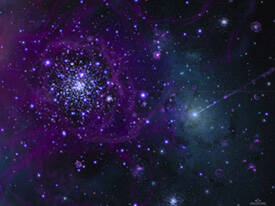There are more stars in our universe than grains of sand on all the shores of oceans of this planet earth. Try to grasp that, just one of the many startling findings of astronomers. More down to earth, an astronomer at an observatory in South Africa tells local politicians: “If tensions in troubled areas risk escalating into violence, do not send in the troops, send in astronomers.” An awareness of our infinitesimal place in this incredible universe, the scientist believes, might relativize our struggles and possibly help us to live together in peace. Although the potential of astronomy to contribute to world peace is one possible fruit, this is not the main focus of Unesco’s Year of Astronomy, whose motto is “The Universe—Yours to Discover.”
Why this year? The year 2009 is the 400th anniversary of Galileo Galilei’s first observations with the telescope, which led to the discovery of the four moons of Jupiter. His observations helped demonstrate that the earth is not the center of the universe. Yet 24 years later, Vatican authorities put Galileo under house arrest because of these views and forbade him to publish. How times change! Sixteen years ago Pope John Paul II rehabilitated Galileo. In announcing the Catholic Church’s participation in the Year of Astronomy, Pope Benedict praised Galileo, calling him a man of faith who “saw nature as a book written by God.” Echoing the thought of St. Bonaventure and Galileo, the pope explained that God has given us two books to read: “the book of Sacred Scripture and the book of nature.” The church is joining in this year with special events sponsored by the Vatican Museum, the Vatican Observatory and the Pontifical Academy of Sciences.
Why should Catholics join the celebration? A more accurate understanding of our universe should lead to a deeper appreciation of the God who Christians believe created the heavens and the earth, and of Jesus Christ who is “the firstborn of all creation” (Col 1:15). Here are a few recent discoveries of astronomers to help us situate ourselves. The universe is approximately 13.7 billion years old. We know that beyond the few thousand stars (suns) visible to the naked eye, there are more than 100 billion galaxies, each with perhaps 100 billion stars of immense variety. We have discovered quasars that emit the light of a trillion suns and stars that are 40 million times brighter than our sun. While gazing on the second nearest star, we see it as it was 4.2 years ago. That is how long it took the light to travel to our planet. We can also see light that left another star 2.5 million years ago. Most recently we are finding planets orbiting many of the stars in our galaxy. The planet Jupiter, we see now, has not four but 64 moons. Most “shooting stars” (meteors), it may be a surprise to learn, are bits of dirt or dust the size of a grain of rice that delight our sight as they burst into our atmosphere 60 miles above us.
We know now that the universe is expanding, and with it our notion and appreciation of the power of God must also expand. (Deus semper major—God is always greater—is a traditional saying of Christian theologians.) Our hope is that schools and parishes, teachers and preachers, might pick up the year’s theme, “The Universe—Yours to Discover.” One recent survey found that more Americans believe in the biblical six days of creation than in the magnificent scenario set before us by scientists. Close to a majority do not believe in evolution and are therefore most likely unaware of the true size, shape and history of our incredible universe. How many Christians realize that if the history of the universe were reduced to one year of 365 days, then Jesus Christ would have become flesh at 23:59:58—that is, two seconds before midnight on Dec. 31?
In addition to learning more about our universe, we hope that many will take time to go outdoors on a clear evening, find a spot without too much light pollution and grow in appreciation of our awesome universe and of the loving God who created the heavens and the earth. Indeed, the poet Gerard Manley Hopkins, S.J., urges us: “Look at the stars! Look, look up at the skies! O look at all the fire-folk sitting in the air!” St. Ignatius Loyola wrote of himself in his memoirs almost a century before Galileo that “it was his greatest consolation to gaze upon the heavens and the stars, which he often did, and for long stretches at a time, because when doing so, he felt within himself a powerful urge to be serving our Lord.” If the Year of Astronomy leads some of us to overcome violence, as the South African astronomer hopes, or to engage in service, as St. Ignatius experienced, or simply to appreciate our universe, as Hopkins urges, it will have achieved much.








